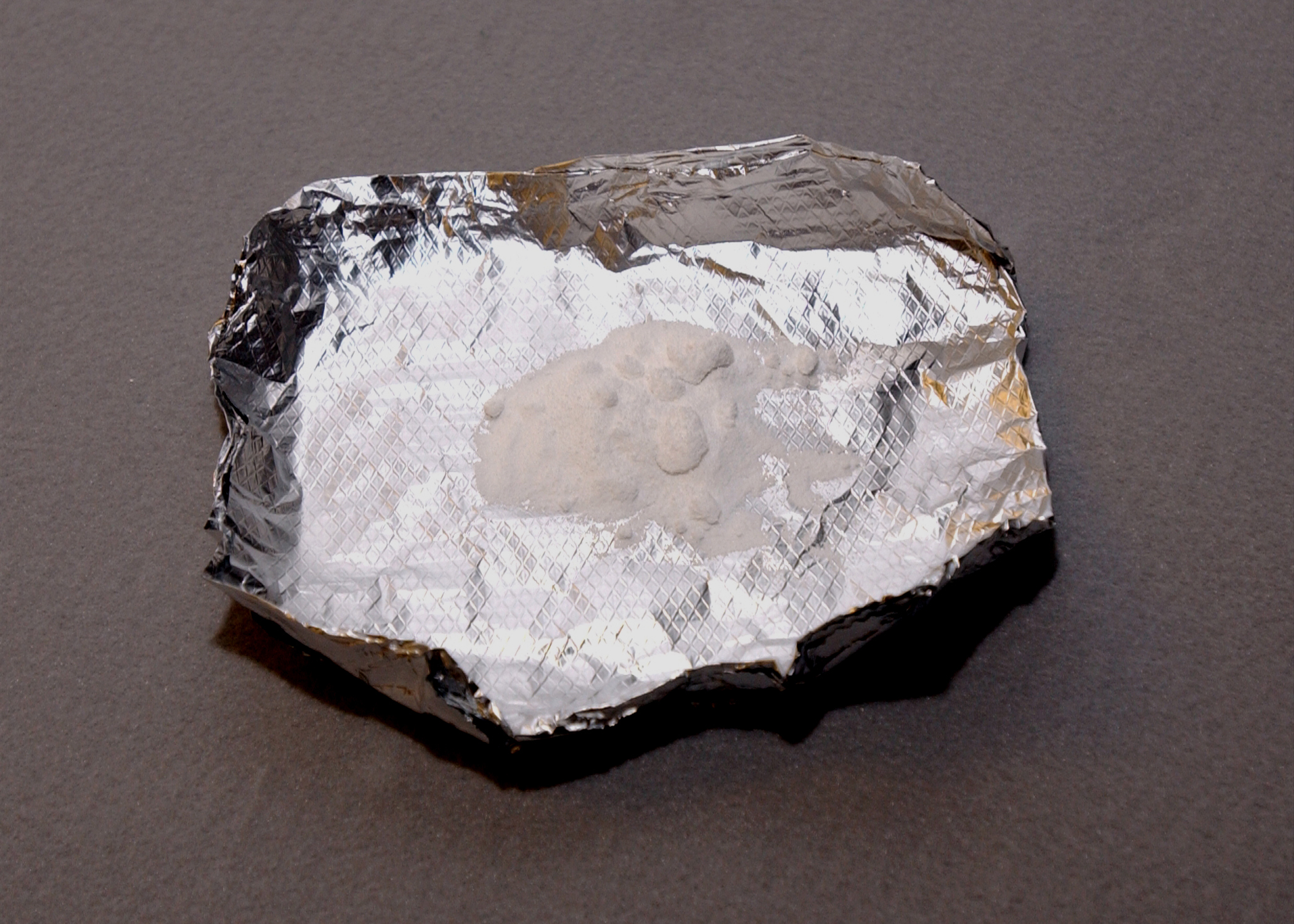|
Methmouth
Meth mouth is a colloquial term used to describe severe tooth decay and tooth loss, as well as tooth fracture, acid erosion, and other oral problems that are often correlated with extended use of the drug methamphetamine. The condition is thought to be caused by a combination of side effects of the drug (clenching and grinding of teeth, dry mouth) and lifestyle factors (infrequent oral hygiene, frequent consumption of sugary drinks, as well as neglecting regular dental cleanings and preventive care), which may be present in long-term users. However, the legitimacy of meth mouth as a unique condition has been questioned because of the similar effects of some other drugs on teeth. Images of diseased mouths are often used in anti-drug campaigns. The condition is difficult to treat, and may involve fillings, fluoride to fight tooth decay and drugs that increase saliva for dry mouth, as well as oral hygiene instruction. It can be dangerous for active methamphetamine users to undergo ... [...More Info...] [...Related Items...] OR: [Wikipedia] [Google] [Baidu] |
Tooth Decay
Tooth decay, also known as caries,The word 'caries' is a mass noun, and is not a plural of 'carie'.'' is the breakdown of teeth due to acids produced by bacteria. The resulting cavities may be a number of different colors, from yellow to black. Symptoms may include pain and difficulty eating. Complications may include periodontal disease, inflammation of the tissue around the tooth, tooth loss and infection or dental abscess, abscess formation. Tooth regeneration is an ongoing Stem-cell therapy, stem cell–based field of study that aims to find methods to reverse the effects of decay; current methods are based on easing symptoms. The cause of cavities is acid from bacteria dissolving the hard tissues of the teeth (Tooth enamel, enamel, dentin and cementum). The acid is produced by the bacteria when they break down food debris or sugar on the tooth surface. Simple sugars in food are these bacteria's primary energy source and thus a diet high in simple sugar is a risk factor. I ... [...More Info...] [...Related Items...] OR: [Wikipedia] [Google] [Baidu] |
Methamphetamine
Methamphetamine (contracted from ) is a potent central nervous system (CNS) stimulant that is mainly used as a recreational drug use, recreational or Performance-enhancing substance, performance-enhancing drug and less commonly as a second-line treatment for attention deficit hyperactivity disorder (ADHD). It has also been researched as a potential treatment for traumatic brain injury. Methamphetamine was discovered in 1893 and exists as two enantiomers: levo-methamphetamine and dextro-methamphetamine. ''Methamphetamine'' properly refers to a specific chemical substance, the racemic mixture, racemic free base, which is an equal mixture of levomethamphetamine and dextromethamphetamine in their pure amine forms, but the hydrochloride salt, commonly called crystal meth, is widely used. Methamphetamine is rarely prescribed over concerns involving its potential for recreational use as an aphrodisiac and euphoriant, among other concerns, as well as the availability of safer subst ... [...More Info...] [...Related Items...] OR: [Wikipedia] [Google] [Baidu] |
Cheek
The cheeks () constitute the area of the face below the eyes and between the nose and the left or right ear. ''Buccal'' means relating to the cheek. In humans, the region is innervated by the buccal nerve. The area between the inside of the cheek and the teeth and gums is called the vestibule or ''buccal'' pouch or ''buccal'' cavity and forms part of the mouth. In other animals, the cheeks may also be referred to as " jowls". Structure Cheeks are fleshy in humans, the skin being suspended by the chin and the jaws, and forming the lateral wall of the human mouth, visibly touching the cheekbone below the eye. The inside of the cheek is lined with a mucous membrane (''buccal'' mucosa, part of the oral mucosa). During mastication (chewing), the cheeks and tongue between them serve to keep the food between the teeth. Clinical significance The cheek is the most common location from which a DNA sample can be taken. (Some saliva is collected from inside the mouth, e.g. using a ... [...More Info...] [...Related Items...] OR: [Wikipedia] [Google] [Baidu] |
Vasoconstriction
Vasoconstriction is the narrowing of the blood vessels resulting from contraction of the muscular wall of the vessels, in particular the large arteries and small arterioles. The process is the opposite of vasodilation, the widening of blood vessels. The process is particularly important in controlling hemorrhage and reducing acute blood loss. When blood vessels constrict, the flow of blood is restricted or decreased, thus retaining body heat or increasing vascular resistance. This makes the skin turn paler because less blood reaches the surface, reducing the radiation of heat. On a larger level, vasoconstriction is one mechanism by which the body regulates and maintains mean arterial pressure. Medications causing vasoconstriction, also known as vasoconstrictors, are one type of medicine used to raise blood pressure. Generalized vasoconstriction usually results in an increase in systemic blood pressure, but it may also occur in specific tissues, causing a localized reduction in b ... [...More Info...] [...Related Items...] OR: [Wikipedia] [Google] [Baidu] |
Periodontal Disease
Periodontal disease, also known as gum disease, is a set of inflammatory conditions affecting the tissues surrounding the teeth. In its early stage, called gingivitis, the gums become swollen and red and may bleed. It is considered the main cause of tooth loss for adults worldwide. In its more serious form, called periodontitis, the gums can pull away from the tooth, bone can be lost, and the teeth may loosen or fall out. Halitosis (bad breath) may also occur. Periodontal disease typically arises from the development of plaque biofilm, which harbors harmful bacteria such as ''Porphyromonas gingivalis'' and ''Treponema denticola''. These bacteria infect the gum tissue surrounding the teeth, leading to inflammation and, if left untreated, progressive damage to the teeth and gum tissue. Recent meta-analysis have shown that the composition of the oral microbiota and its response to periodontal disease differ between men and women. These differences are particularly notable in t ... [...More Info...] [...Related Items...] OR: [Wikipedia] [Google] [Baidu] |
Powder Meth In Foil
A powder is a dry solid composed of many very fine particles that may flow freely when shaken or tilted. Powders are a special sub-class of granular materials, although the terms ''powder'' and ''granular'' are sometimes used to distinguish separate classes of material. In particular, ''powders'' refer to those granular materials that have the finer grain sizes, and that therefore have a greater tendency to form clumps when flowing. ''Granulars'' refer to the coarser granular materials that do not tend to form clumps except when wet. Types Many manufactured goods come in powder form, such as flour, sugar, ground coffee, powdered milk, copy machine toner, gunpowder, cosmetic powders, and some pharmaceuticals. In nature, dust, fine sand and snow, volcanic ash, and the top layer of the lunar regolith are also examples. Because of their importance to industry, medicine and earth science, powders have been studied in great detail by chemical engineers, mechanical engineers, ch ... [...More Info...] [...Related Items...] OR: [Wikipedia] [Google] [Baidu] |
Autoimmune Disease
An autoimmune disease is a condition that results from an anomalous response of the adaptive immune system, wherein it mistakenly targets and attacks healthy, functioning parts of the body as if they were foreign organisms. It is estimated that there are more than 80 recognized autoimmune diseases, with recent scientific evidence suggesting the existence of potentially more than 100 distinct conditions. Nearly any body part can be involved. Autoimmune diseases are a separate class from autoinflammatory diseases. Both are characterized by an immune system malfunction which may cause similar symptoms, such as rash, swelling, or fatigue, but the cardinal cause or mechanism of the diseases is different. A key difference is a malfunction of the innate immune system in autoinflammatory diseases, whereas in autoimmune diseases there is a malfunction of the adaptive immune system. Symptoms of autoimmune diseases can significantly vary, primarily based on the specific type of the d ... [...More Info...] [...Related Items...] OR: [Wikipedia] [Google] [Baidu] |
Trismus
Trismus is a condition of restricted opening of the mouth. The term was initially used in the setting of tetanus. Trismus may be caused by spasm of the muscles of mastication or a variety of other causes. Temporary trismus occurs much more frequently than permanent trismus. It is known to interfere with eating, speaking, and maintaining proper oral hygiene. This interference, specifically with an inability to swallow properly, results in an increased risk of aspiration. In some instances, trismus presents with altered facial appearance. The condition may be distressing and painful. Examination and treatments requiring access to the oral cavity can be limited, or in some cases impossible, due to the nature of the condition itself. Definition Trismus is defined as painful restriction in opening the mouth due to a muscle spasm, however it can also refer to limited mouth opening of any cause. Another definition of trismus is simply a limitation of movement. Historically and commonly ... [...More Info...] [...Related Items...] OR: [Wikipedia] [Google] [Baidu] |
Attrition (dental)
Dental attrition is a type of tooth wear caused by tooth-to-tooth contact, resulting in loss of tooth tissue, usually starting at the Dental terminology, incisal or Dental terminology, occlusal surfaces. Tooth wear is a physiological process and is commonly seen as a normal part of aging. Advanced and excessive wear and tooth surface loss can be defined as pathological in nature, requiring intervention by a dental practitioner. The pathological wear of the tooth surface can be caused by bruxism, which is clenching and grinding of the teeth. If the attrition is severe, the enamel can be completely worn away leaving underlying dentin exposed, resulting in an increased risk of dental caries and dentin hypersensitivity. It is best to identify pathological attrition at an early stage to prevent unnecessary loss of tooth structure as enamel does not regenerate. Signs and symptoms Attrition occurs as a result of opposing tooth surfaces contacting. The contact can affect cuspal, incisal ... [...More Info...] [...Related Items...] OR: [Wikipedia] [Google] [Baidu] |
Temporomandibular Joint
In anatomy, the temporomandibular joints (TMJ) are the two joints connecting the jawbone to the skull. It is a bilateral Synovial joint, synovial articulation between the temporal bone of the skull above and the condylar process of mandible below; it is from these bones that its name is derived. The joints are unique in their bilateral function, being connected via the mandible. Structure The main components are the joint capsule, articular disc, mandibular condyles, articular surface of the temporal bone, temporomandibular ligament, stylomandibular ligament, sphenomandibular ligament, and lateral pterygoid muscle. Capsule The articular capsule (capsular ligament) is a thin, loose envelope, attached above to the circumference of the mandibular fossa and the articular tubercle immediately in front; below, to the neck of the condyle of the mandible. Its loose attachment to the neck of the mandible allows for free movement. Articular disc The unique feature of the temporomand ... [...More Info...] [...Related Items...] OR: [Wikipedia] [Google] [Baidu] |






